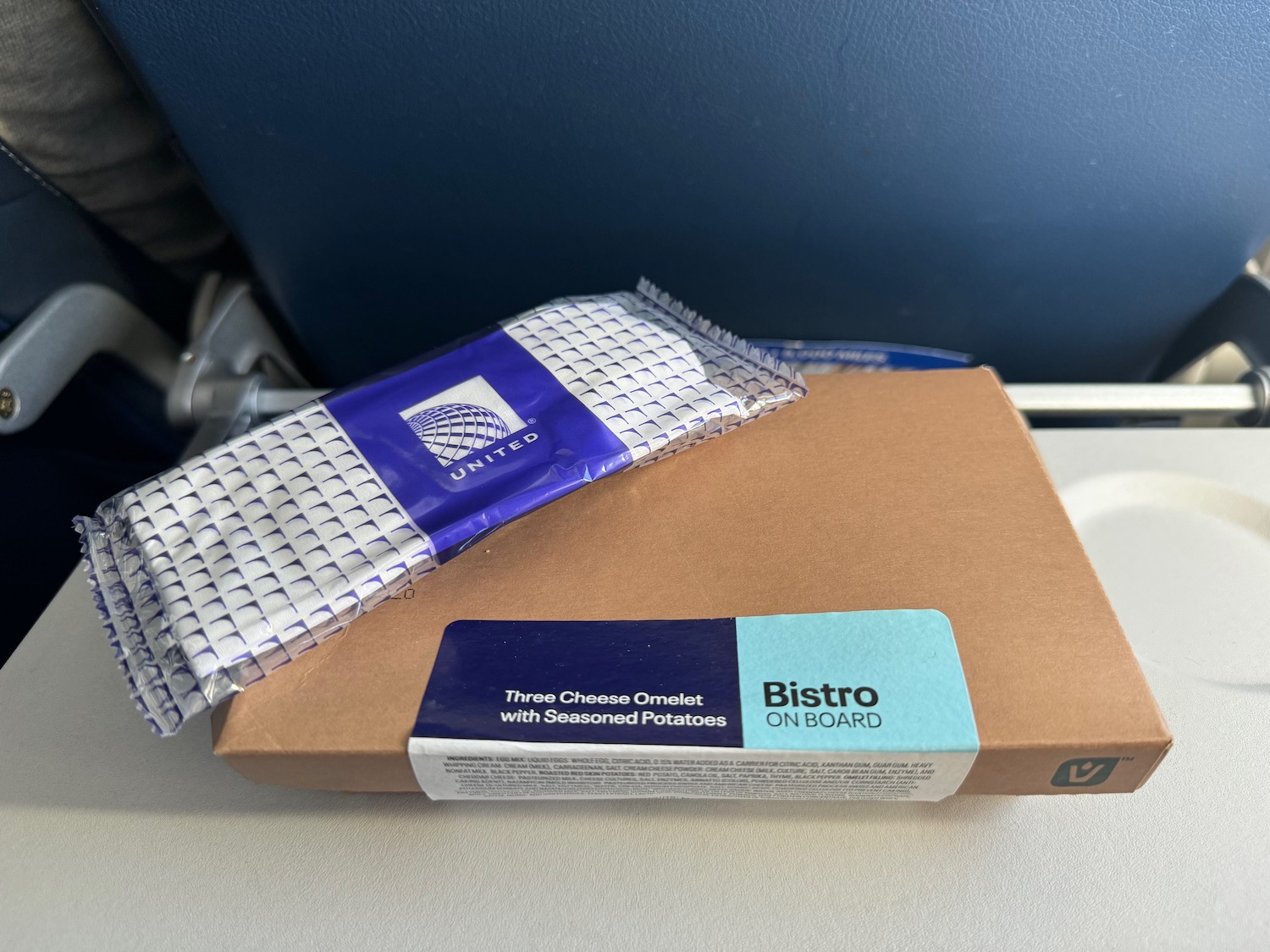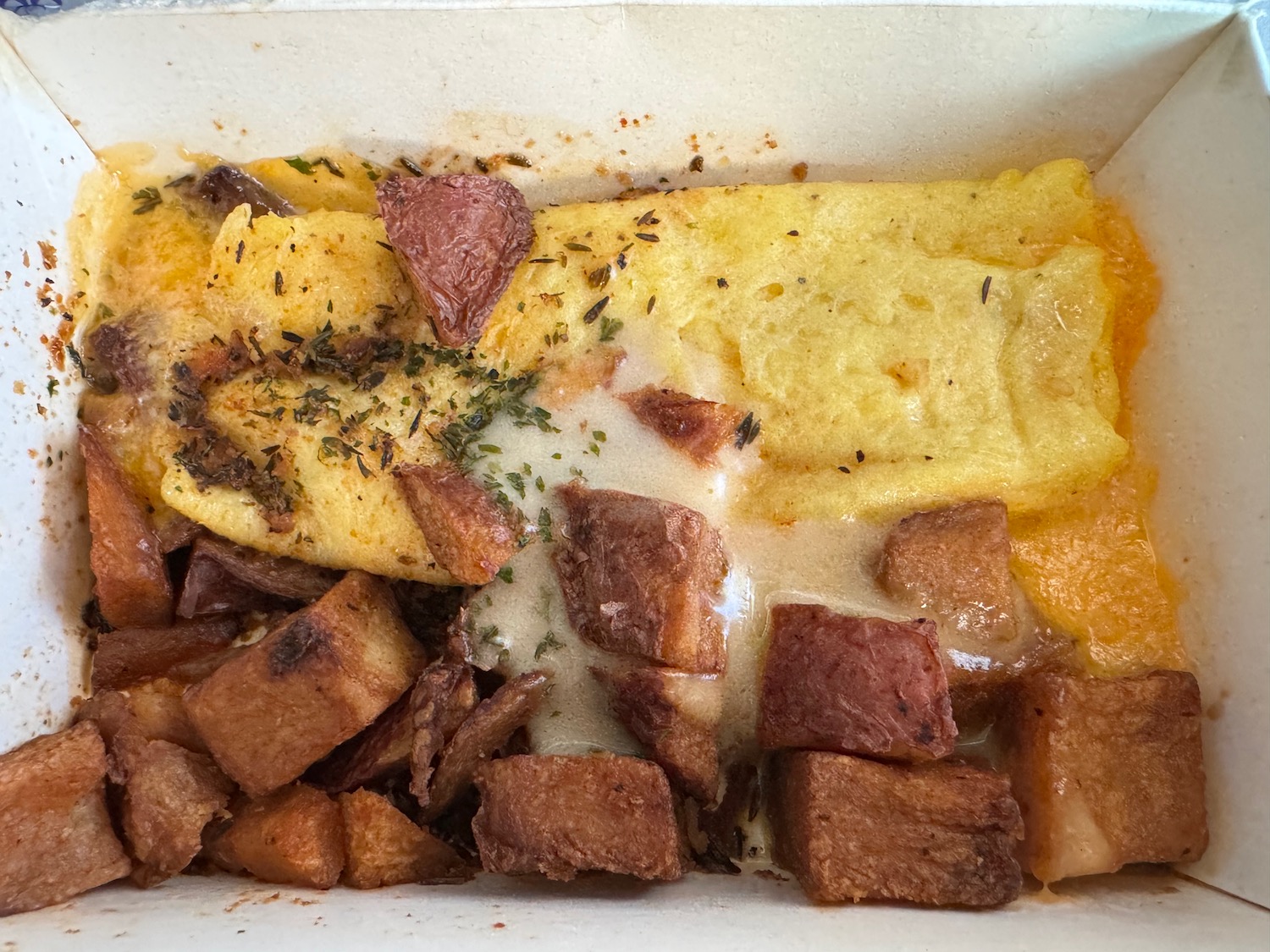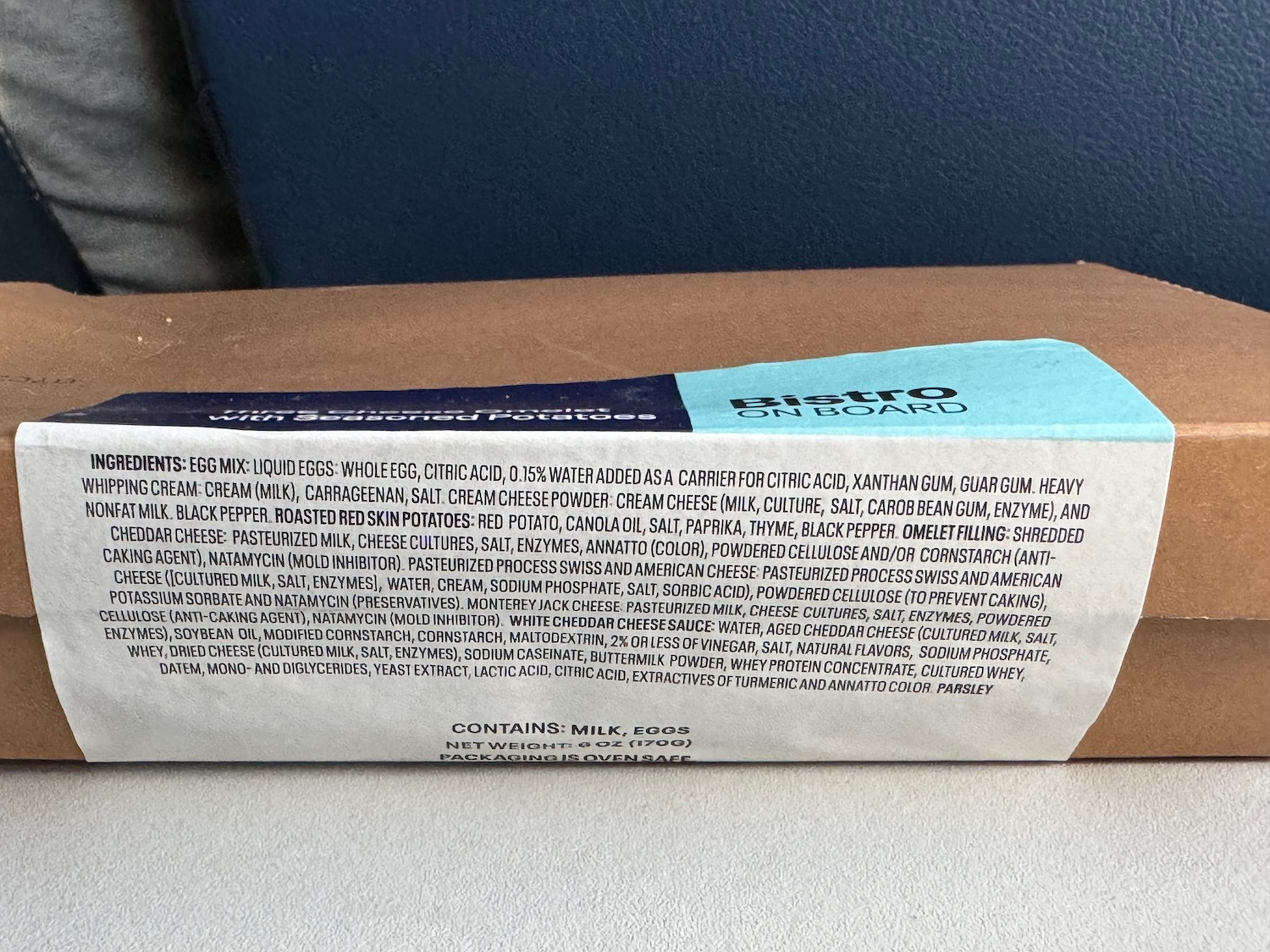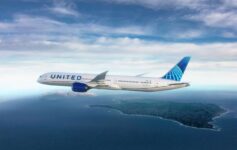I’ve got this problem. I like airline food. But whenever I start to look into what I’m actually eating, I suddenly become less hungry. That was the case with an omelet I recently consumed on United Airlines in economy class. Yes, it was admittedly rather delicious…but the ingredient list certainly made me scratch my head.
How Many Preservatives Does An Airline Omelet Need?!
On a recent United Airlines flight from Los Angeles to Chicago I ordered an omelet for breakfast from the “Bistro Onbaord” menu. It cost $10 (free for Premier 1K frequent flyers).
- Three Cheese Omelet with Seasoned Potatoes
- Swiss, cheddar and Monterey Jack cheese omelet with a side of seasoned potatoes
The omelet was frankly a nice substitute for a first class breakfast. It was not pretty, but it was a “typical” airline omelet and dagnabbit, I like airline omelets…



But then I glanced at the ingredient list on the box…

What is datem? What are mono- and diglycerides? How about powdered cellulose? Isn’t that refined wood pulp? What is natamycin? And sodium phosphate? What is guar gum? What are “natural flavors” (are there not many natural flavors)?
The mile-long list of ingredients may not necessarily be harmful, but I don’t know that it is good and certainly not healthy. Sure, the logistics of getting an omelet from a flight kitchen to an aircraft seat are not such that each omelet can be freshly made from farm-raised, free-range eggs each morning before thee flight (we’re not flying Lufthansa First Class after all).
I’m truly considering a big change in my diet which could impact the way I review flights. I’m thinking of going much more natural in what I eat and further reducing my meat consumption (I really don’t want gout one day…). That may mean no more airplane omelets or the occasional Taco Bell, but I’m pretty sure my body would thank for it, if not now, on some future date.
Are all these ingredients in an airline omelet really necessary?
My Meal of the Week feature examines an airline meal from my travels over the years. This may be a meal from earlier in the week or it may be a meal served over a decade ago.




Taco Bell beef is only 88% meat so don’t need to worry about gout on that one.
Portion sizes on airplane meals tend to keep diets in check anyways when compared to some of the favorite chain restaurants people frequent. The meals aren’t the healthiest, but probably aren’t the sodium bomb you’ll receive elsewhere.
That implies that the other 12% is fake beef. It’s just seasonings and preservatives.
If you made taco meat at home you’d also have at most 90% beef with the remaining 10% as seasonings (onions, spices, etc), unless you’re into white people tacos that taste like napkins.
DATEM, mono-, and diglycerides are all emulsifiers. Cellulose is usually added to powdered cheese to prevent caking, needed for pre-grated cheeses. Guar gum is the most “natural” of these, and is used as a thickener and stabilizer. A “real” cheese sauce will break after a refrigeration/reheating cycle. Honestly, natamycin is the most annoying ingredient, since the idea is to pre-dose with an anti-fungal so as to extend the shelf life. Really, though, to answer your question: are they necessary? No, of course not. Airplane food is made on a budget that would make school cafeterias blush, far in advance of being served, so chemical interventions are needed for that “cheese omelet” to survive intact. Next time, pick the yogurt cup.
Rest in peace United Cheeseburger review
For better or for worse, I do think we will reach that point on LALF!
The important question is : Do the catering employees wash their hands with hot water and disinfectant soap ? Ha !
They use Palmolive dishwashing liquid. It softens hands while you do dishes. You’re soaking in it.
@Matthew, it is my understanding from talking with someone at LSG SkyChefs that UA Bistro On Board (and their domestic First Class meals, as well as many AA meals) is not made fresh, but is made potentially months ago at a LSG Frozen Foods manufacturing facility in Pittsburgh, PA.
(https://www.lsg-group.com/news/article/lsg-sky-chefs-establishes-frozen-food-facility-in-the-u-s/).
Hence the inclusion of chemicals needed to preserve its texture, flavor and of course to prevent the food item from spoiling.
Your understanding would be incorrect. LSG is a caterer, these products are made by some of the largest manufacturers in the country who supply other large retailers like Starbucks.
Fast food French fries like from McDonalds typically have 40 or more ingredients for what is essentially a potato, oil, and salt. It’s garbage. You wouldn’t expect airline food to be any different.
@Chi … +1 . Ditto . My airline food is limited to alcohol and rest .
I get it of course. They need to add all of that to enhance the flavor and mouth feel and to make sure it doesn’t spoil as it’s stuffed in the airplane refrigerators and flown all over the country, but still, it’s trash and not worth eating.
I, like you Alert, have been skipping the airplane food. You are allowed however to bring your own food, if you can eat it without making a smelly mess.
I’ve been practicing this too lately, at least in 7-9hr TATL; meals in lounge, and a glass of bubbly and zzz in flight.
It would be too expensive to eat healthier in the US. Most produce is grown with genetically altered seeds to strengthen resiliency to pests. Pesticides leak into organic fields. Food processing adds chemicals to prolong shelf life. Most American food products are considered contaminated and forbidden for European import.
Hey at least it wasn’t spoiled. And it looks a little bit better than a Havana omelette.
Hey, you get your daily requirement of Xanthan Gum, my favorite artificial ingredient. It’s named after the bacterium used to culture it and is added to lots of stuff as a thickener. Paint and toothpaste, for example. Yum!
If you are worried about that ingredient list frankly you shouldn’t eat outside your home.
I think that’s a pretty good ingredient list for a mass-produced, frozen airline meal. There’s no MSG or other flavor enhancers like disodium inosinate. There’s no artificial colors or flavors. It looks like they use a mix of natural cheese with processed cheese, but they didn’t use any imitation cheese substitutes that are a mixture of enzymes, oils, starches, and artificial flavors and colors.
I generally don’t eat outside of my home.
WHAT! You just reported on a week of cruise eating, and it is the rare aircraft review that doesn’t include a review of the meals. Every city review includes a restaurant or two.
Does ‘eating at home’ mean the meals you eat on the road don’t count as meals?
Happy to chat with you about eating healthy. I work in that space .
Are you willing to discuss it openly here? I don’t mind doing so.
I want to maintain/build muscle mass, so I need about 200g of protein per day. Currently, I get that mostly from animal protein (meat or poultry, eggs, milk, yogurt).
I’m pretty trim now and hope to be even stronger/fitter as I finish my 30s and enter my 40s. Again, the goal is muscle mass/definition and strength.
I only eat between 1pm and 9pm at home, so that’s a lot of protein concentrated into an eight-hour eating window.
Part of me is considering dropping all red meat, at least for a time, and dropping all processed foods. My diet would be yogurt, nuts, fruit, vegetables, fish, and poultry. That’s it.
I’m also considering ditching all alcohol for good. These days, I very rarely drink and when I do it is only a single glass or cocktail.
Thoughts?
@Matthew … If you ditch alcohol , save it for me . Alcohol is my balanced diet which makes airline travel bearable .
In the Army , I purified my canteen water with a good pour of white rum and a vigorous shake-up . I had 3 plastic canteens full , because others would ask for some of my water . It also worked as a disinfectant when poured over a skin injury .
Just to be clear, I am not a doctor or a dietitian. I work in the food industry mostly with companies that provide a more healthy approach, not processed, clean ingredients, etc..
Here are some thoughts. You mentioned dropping red meat, some people drop carbs, etc.. but actually it is all about the quality of the ingredients, how your food is prepared and the portions you eat. One of the healthiest diets in the world is the Mediterranean diet and you probably heard of Blue Zones. If you look at Italians for example, you don’t see many obese people there. First, they walk a lot. Second, they eat extremely fresh ingredients, almost no processed foods, small portions and a great balance. Let’s pick on pasta. Here you got to an “Italian” restaurant and you get a ton of pasta. Usually a pasta that went through a quick dry process and is not highly digestible. 00 flour, slow dried for up to 36 hours in low heat. Great pasta cannot be yellow, it has to be pale. Same for pizza. But, it is all in small quantities. In Italy you start with the primo which is usually pasta and then follow with the secondo which is meat or fish.
You can read about protein. You need around 1 gram of protein per kilogram pf body weight every day. That is not easy but can be done. Cut sugar, cut bad carbs (buy real sourdough bread and not commercial bread which contains sugar), Back to red meat. Find a grass fed beef which is low in fat, has no grain and it is actually very good for you. Same with white fish. Cultured dairy and fermented beverages are great for digestion. Mushrooms are great as well. Yogurt low sugar, cottage cheese, kombucha, grass fed beef, pasture raised eggs, plant based protein powder to mix with fruits on a smoothie, white fish, all sorts of vegetables and salads, cook with olive or avocado oil (or no oil at all).
Anything with Seed Oils such as Canolla or sunflower or safflower are bad for your metabolism/health. Causes inflammation in the body, gut inflammation, insulin resistance, etc. Also, any added sugar is very bad. But you’re still young. I’m older and I/we need whole,e unprocessed food. Wait ’till you get to my age 60+ you will be paying more attention. Hopefully, by then the food industry will start giving us healthier, less processed food!…… I try to avoid food when I travel (especially in an airplane) although that is almost impossible since we have to eat at some restaurant somewhere.
Read you’re previous comment; Good! keep up the protein, the whole, unprocessed food!
Bobby Parrish, a youtube author has a good explanation and list of ingredients in foods that are okay or bad for your health along with a lot of other authors on youtube that I get info from. …
Had this a few weeks ago because we only had one option up front for breakfast. Was not impressed.
How about the spoiled food recently on the United flight?
If the new diet results in more shirtless pics I’m all for it.
Half of the ingredient list describes all the different possible cheeses meaning that it’s a large list to cover various different cheeses that may be used, but not necessarily in this omelette. I LOVE grated parmesan cheese (comfort food) and the cellulose is sawdust but that’s ok (think of it as fiber). It keeps it from globbing all together.
Overall, I understand most of the ingredient list and aside from the preservatives and “gum”, it’s not that bad.
Regarding the McD’s haters: Keep in mind that McD’s supplies their franchisees with largely fresh ingredients because they’re made on demand and served quickly. McD’s moves food in and out in volume so there’s no concern about it sitting and needing preservatives for the most part. That being said, the “perfect fries” of McD’s are the worst there in that I read the particular color and texture requires a lot of unnecessary processing which I think it wrong. I don’t mind “imperfect” fries with some brown spots if they’re tasty and McD’s fries aren’t my favorite. Arby’s and even Burger King blow them away in that regard.